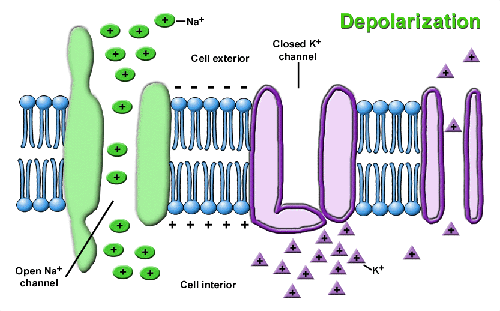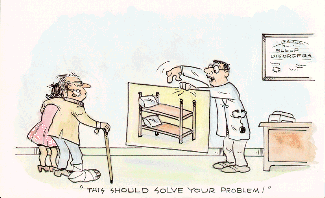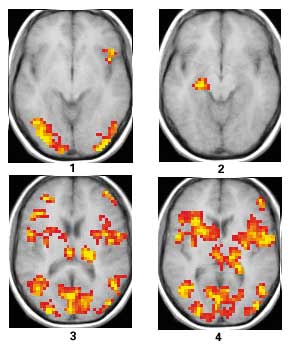 |
| [Source] |
Dr. Robert Cressman, member of the Physics and Astronomy Department at George Mason University as well as a member of the Krasnow Institute for Advanced Study, presented the research he is currently working on with others. They are exploring a new means of treatment for epileptic seizures. A wide-range of medications are currently in use to treat epilepsy and while many individuals respond well to them, others do not. Some build up tolerance to these medications after a period of time while others develop 'refractory epilepsy' and have seizures that cannot be controlled with any type of drug. As a result of these cases, Dr. Cressman and his team felt it was necessary to develop a new means of treatment and are looking into electrical stimulation. Deep brain stimulation, used to treat tremors associated with Parkinson's disease, is now being considered a form of treatment for epilepsy (1).
 |
| PET scans can be used to evaluate patients with epilepsy. [Source] |
 | |||
| One type of epilepsy is primary generalized seizure, affecting both cerebral hemispheres | [Source]. |
 | ||||||||
| Neuronal action potential [Source]. |
They then went on to survey previous studies that were done investigating this phenomenon. In one study, potassium levels were elevated in a model of rat hippocampal epilepsy. The elevated potassium levels led to excitation of the cells and similar, repeated types of seizures (3). In another study with a high potassium and low calcium model, electrographic seizures were monitored. Researchers found that a network of isolated cells still resulted in generation of repeated seizures (4).
 |
| Depolarization of a neuron [Source]. |
After analyzing these studies, Dr. Cressman and his team developed a simple model of a single neuron with dynamic intra and extra-cellular sodium and potassium concentrations. The model was based on the standard Hodgkin-Huxley equations as well as on Nernst equations. An ASCF bath and a simple glial buffering system were also included. An essential function of glial cells is to regulate extracellular potassium levels and do so with inward-rectifying potassium channels. Autonomous seizures were generated through oscillations in the cell's intra and extracellular concentrations. The model they developed was able to reproduce these seizures. By stimulating the seizing cell with small positive signals, there was a decrease in the activity and concentrations were fixed at a level at which the cell can respond to normally (1). They figured that this was a way to control the effects of seizures. They also found that increasing the potassium levels in the ACSF bath resulted in faster generation of sparks, making the model more similar to physiological conditions.
Dr. Cressman concluded by saying that slow stimulation of the cell can lead to both the suppression of autonomous seizures as well as a significant reduction in seizure conduction. The model they developed exhibits periodic bursting. The bursting behavior arises as the fast spiking behavior of the neuron is modulated by the slow oscillatory behavior in ion concentration (2). In the future, they plan on testing these predictions and their neuronal model in the lab. He also mentioned the measurement of oxygen using an epifluorescence apparatus. This would be useful as it would provide them with a method of identifying the foci of seizure activity by measuring changes in oxygenation (1).
Dr. Cressman and his team have been conducting research that will be invaluable for future innovations. Their work emphasizes the importance of understanding ion concentration homeostasis in the maintenance of the normal physiological states. Their work suggests that by elucidating the mechanisms underlying this homeostasis, treatments for pathological conditions like epilepsy may be more effective. Vagus nerve stimulation (VNS) is often used as an alternative treatment for patients with medically refractory epilepsy and treatment-resistant depression. Studies have been conducted in which the mechanism of action of VNS has been heavily researched, revealing that various thalamic nuclei and the medial temporal lobe (MTL) play a role in the epileptogenic process. Other studies analyzed the effectiveness of acute deep brain stimulation as a means of treatment (5). In individuals with drug-resistant epilepsy, oftentimes, the seizures are in or near a critical part of the brain, making surgery too great a risk. Pacemakers implanted in the brain may help control or eliminate epileptic seizures with programmed or responsive stimulation. Perhaps in the future, researchers can use this method developed by Dr. Cressman and his team to more fully understand how seizures are generated. By utilizing the model and these methods, would it be possible for researchers to detect pathology in brain dynamics, intervene, and prevent epileptic seizures from occurring?
---
References:
1. Cressman, Dr. Robert. "Controlling Seizures Through Stimulation Induced Ionic Modulation", Department of Physics and Astronomy, Krasnow Institute for Advanced Study. 29 November 2012. Seminar.
2. Barreto, E., Cressman, J. 2011. Ion Concentration Dynamics as a Mechanism for Neuronal Bursting. Biophys. J. 37(3):361-373.
3. Jensen, M. S., Yaari, Y. 1997. Role of Intrinsic Burst Firing, Potassium Accumulation, and Electrical Coupling in the Elevated Potassium Model of Hippocampal Epilepsy. Neurophysiol. J. 77(3):1224-33.
4. Bikson, M., et al. 2003. Depolarization Block of Neurons During Maintenance of Electrographic Seizures. Neurophysiol. J. 90(4):2402-8.
5. Boon, P., et al. 2009. Electrical Stimulation for the Treatment of Epilepsy. Neurotherapeutics. 6(2):218-27.












